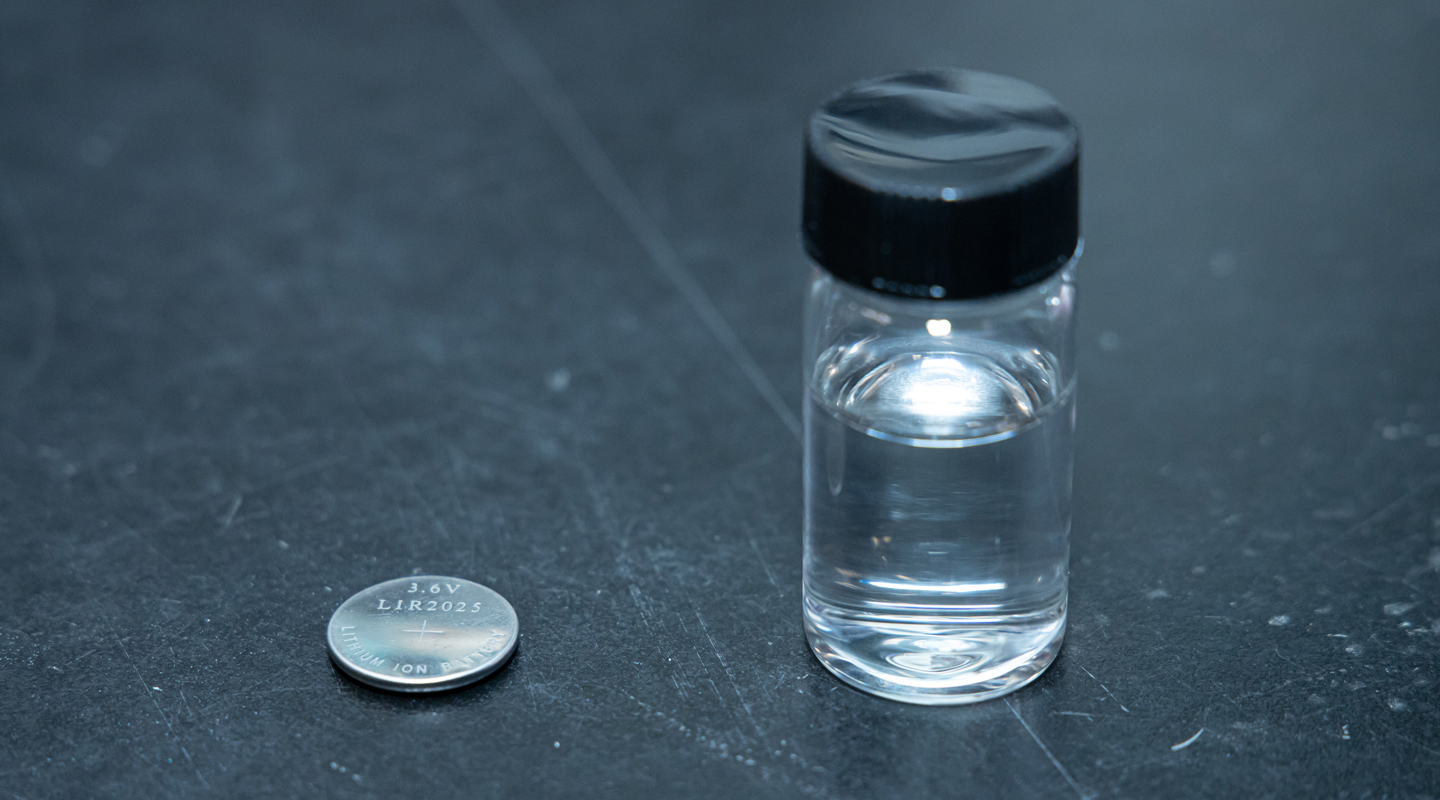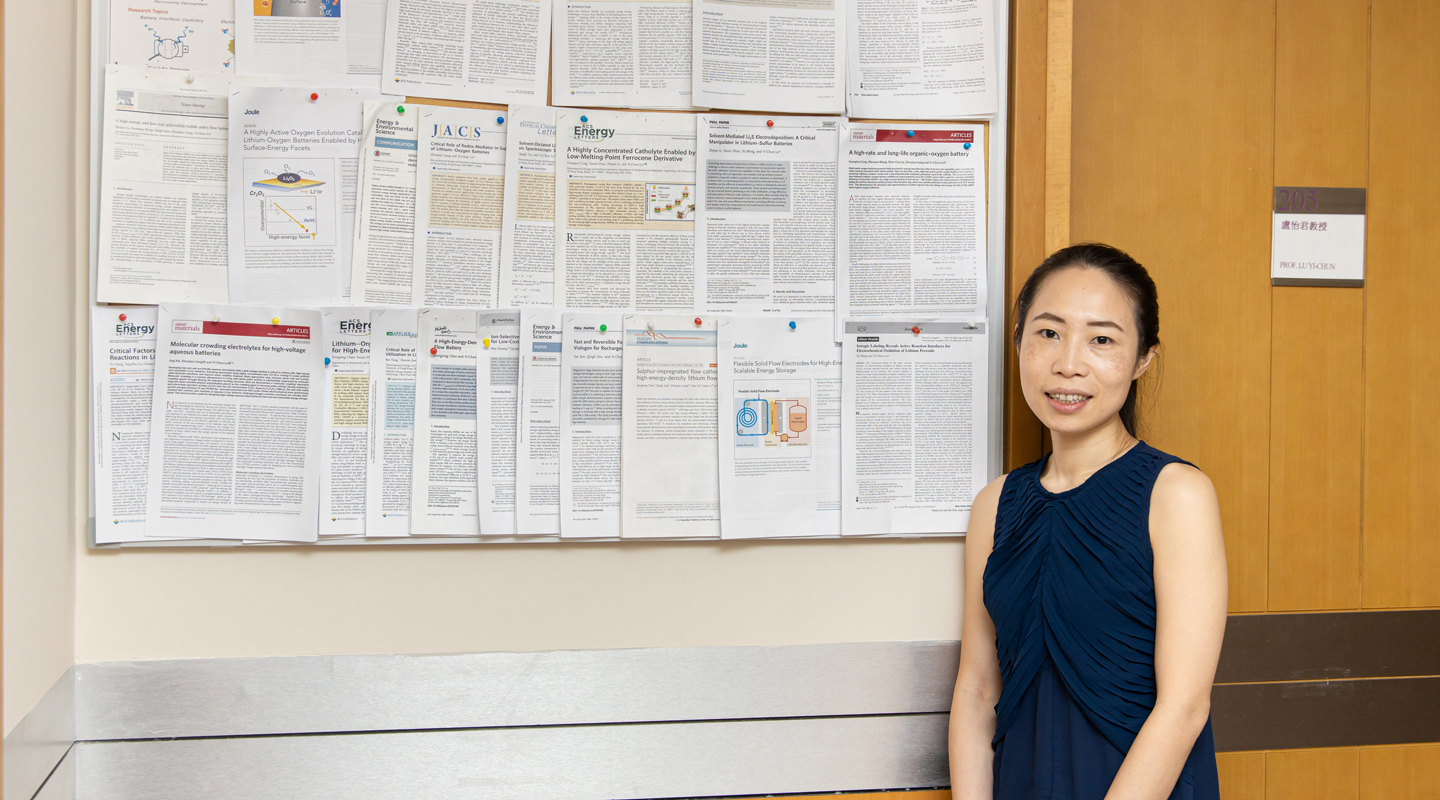A Better Battery
Lu Yi-Chun opens up a new generation of batteries

Lithium-ion batteries are used to power everything from the mobile phone in your pocket to a Tesla truck. They pack a powerful current punch, making them very versatile for devices that need a brief, heavy jolt of electricity, like a digital camera.
Check in at the airport for any flight, however, and you’re interrogated about their presence in your luggage. A short-circuit can cause the battery to overheat, or even explode. Lithium batteries are also expensive to produce. The world’s lightest metal is found in only a handful of places on the planet, and requires toxic chemicals to extract.
CUHK materials scientist Prof. Lu Yi-Chun wants to address those problems. She has developed a new way of storing energy in a battery that is at once safer, cheaper and better for the environment to produce.
‘We know we need safety, but we still go for flammable electrolytes because we need energy,’ Professor Lu says. ‘We really want to break out of this trend, and establish a more sustainable method.’
Professor Lu has worked out a way to use a water-soluble polymer, polyethylene glycol, to create a new water-based electrolyte system. The polymer is safe enough that it is found in skin cream and even used as a food additive.

Professor Lu’s insight is to use a phenomenon called molecular crowding to stabilize the water inside a battery. Water can serve as the solution that mediates the ions in an electrical current, but it is unstable.
The polymer, known in short as PEG, acts as a crowding agent, ‘surrounding’ water molecules with hydrogen bonds to prevent them from splitting apart. Under normal circumstances, water will spontaneously split if it hits a low-enough electrical potential at the negative electrode. That event transfers a burst of high-energy electrons to the water, breaking it apart and releasing hydrogen gas.
Water-based batteries have existed for years. But unlike lithium-ion batteries, which in their original version use lithium salts in a flammable liquid solvent, aqueous batteries have struggled to generate sufficient voltage to make them useful.
Professor Lu, who holds a post in CUHK’s Department of Mechanical and Automation Engineering, has honed her new battery to the point where it competes with the low end of the energy density of commercial lithium-ion batteries.
A commercial lithium-ion battery produces an energy density of between 100 and 400 Watt-hours per kilogramme. Professor Lu’s battery can currently produce an energy density of 75 to 110 Watt-hours/kg. ‘Although we are at the lower side, we keep improving,’ she explains. ‘And keep in mind this is an absolutely safe battery.’
PEG is commercially available as an ingredient, and 30 to 100 times cheaper than lithium. It also is not toxic, and requires none of the hydrochloric acid that lithium requires to produce.
‘It has so many advantages,’ Professor Lu says. ‘Connecting all these dots, we thought this is a new approach to prevent one of the most important bottlenecks in the battery field.’
Her findings led to a paper published in the journal Nature Materials this April. The article proposed the battery prototype and proved its efficacy.

Water is unstable in aqueous batteries. Using lithium salts averts this problem. Lithium is particularly useful in batteries because it is so light as a metal, and the lightest solid element, making it a suitable charge carrier when mixed into an electrolyte solution.
Science has advanced on the original flammable lithium-ion batteries. But to avoid using a flammable solvent, the new generation of batteries requires a very high concentration of lithium salts, around 90% of the solution, which raises both the price of production and the toxicity of the liquid inside the battery.
Professor Lu’s battery uses a water-based solvent mixed with PEG, and only a low level of lithium salts, around 35% of the solution. That makes the batteries safe as well as cheap to produce.
Professor Lu thought her new approach was promising, but was unsure at the start. ‘It is difficult at the beginning because you are doing things no one else is doing, and you don’t know it works. We needed to trust the idea and put in a lot of effort.’
The next step will be to improve the battery’s energy density, and make her prototypes bigger. Her team have so far produced ‘button’ batteries, but she sees scope for the batteries to be deployed on a huge scale, such as in the electricity grid.

Professor Lu’s team have filed to patent their technology, and are looking to commercialize it. She would like to find a private-sector partner with battery-manufacturing experience and battery-assembly capacity, to produce and test the battery prototype on a larger scale. Two of her doctoral students are also working with CUHK to explore the possibility of funding a startup in the Hong Kong Science Park.
By Alex Frew McMillan
Photos by Eric Sin
This article was originally published on CUHK Homepage in Jul 2020.

